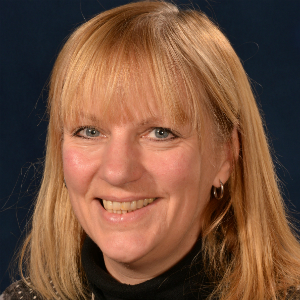 The six high impact areas articulate the contribution of health visitors to the 0-5 agenda and describe areas where health visitors have a significant impact on health and wellbeing and improving outcomes for children, families and communities. One of these areas is the getting children ready for school - health visitors in Whitby are working together with children’s centre staff to make this happen. This is also a universal health visiting review offered to all families.
The six high impact areas articulate the contribution of health visitors to the 0-5 agenda and describe areas where health visitors have a significant impact on health and wellbeing and improving outcomes for children, families and communities. One of these areas is the getting children ready for school - health visitors in Whitby are working together with children’s centre staff to make this happen. This is also a universal health visiting review offered to all families.
The impact of poor speech language and communication goes across a child’s development and impacts on their ability to communicate feelings and needs. This can have a number of consequences, like challenging behaviour or difficulty in making friends. It can also hinder academic development. It is therefore an important area of child development for both children’s centre staff and Health Visitors to support. This case study describes an approach to integrated working and collaborative interventions to support speech development and improved outcomes. The case study demonstrates how multi-agency teams are preparing children to be school ready.
“The term speech, language and communication needs (SLCN) encompass a wide range of difficulties relating to all aspects of communication in children and young people. These can include difficulties with fluency, forming sounds and words, formulation sentences, understanding what others are saying, and using language socially.”
(Bercow 2009)
Children’s Centre staff and health visitors are working together in Whitby to address the speech, language and communication problems of the local children. Usually speech and language problems require a thorough assessment undertaken by a trained Speech therapist. This assessment is normally under taken in the Children’s Centre.
Health visitors have received extra training and now Health Visitors undertake the routine assessment of speech around a child’s second birthday, and provide a more detailed assessment. If delay is observed, parents are encouraged to attend the Speech and Language Drop-In for a full assessment by a therapist who would determine which level of support the child needs. After assessment, a case file is opened for each child attending the session by the children’s centre staff. Either home visits, group based interventions or a range of assessments including: Health Visitors I-CAN assessment tool (to review communication levels), North Yorkshire Early Years assessments within early year’s settings, Speech and Language Therapy (SALT) assessments and session evaluations are used to track the progress of the child.
As a result of the training, Health Visitors have reported feeling more confident in identifying the speech, language and communication needs of children. Children’s centre staff have also reported having more confidence in using the assessment tool and identifying signs of language delay. The impact of the integrated I-CAN training has had a range of positive effects on outcomes for children and parents:
- Health professionals describe being more confident when identifying speech language and communication issues
- The Children’s Centre has developed a coherent pathway that explores with parents the need to communicate with your child for the antenatal period onwards
- We now have strong links between a multi professional team, Health Visitors, SALT, PSAs and settings, where strategies are applied at the right level
- As a direct result of Health Visitors using the I-CAN assessment tool, the SALT team report improved referrals: earlier referrals around the age of 2 years and more appropriate referrals
- We have had an increase in the numbers of parents whose interaction with their babies and toddlers has improved
Diane Leith, Children’s Centre Service Manager, Whitby

1 comment
Comment by Freda O'Driscoll/Nicky Edmondson posted on
This is great news to hear and mirrors our own approach in Hillingdon, where we have developed a joint early years speech, language and communication needs (SLCN) pathway across Children's Centres, Local Authority Early Years and Childcare services, Health Visiting and Speech and Language therapy. Exactly as described in Whitby, different apthway options are taken depending on the child's level of SLCN and all professionals have received additional training to screen early.